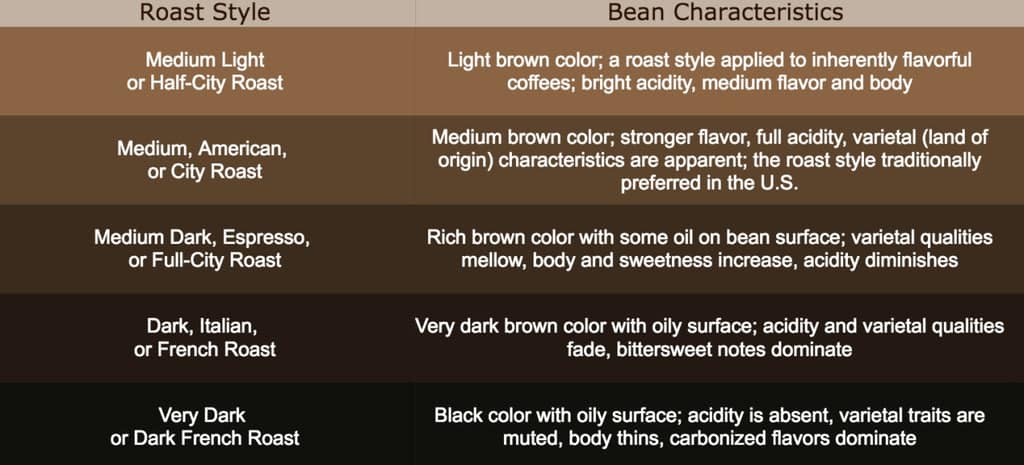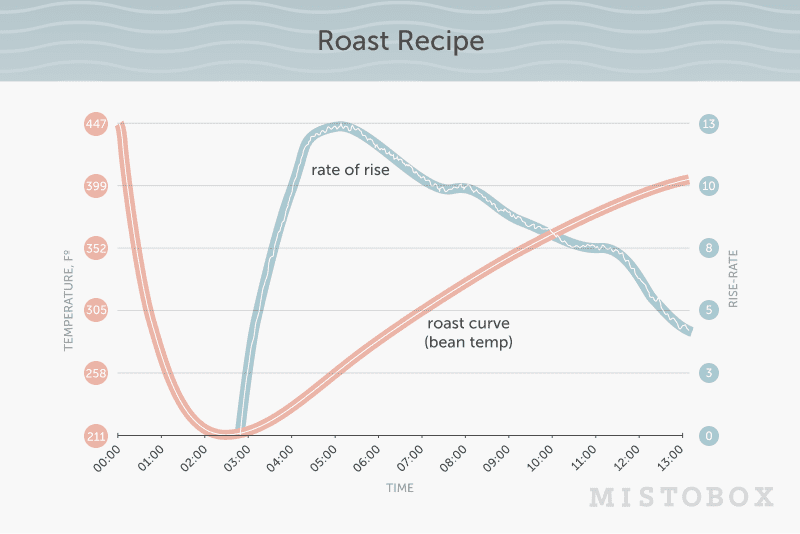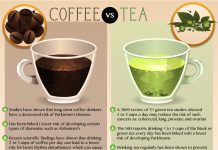Coffee lovers rejoice! If you’ve ever wondered how the roasting process impacts the flavor of your cup of joe, then prepare to have your curiosity satisfied.
In this article, we will explore the fascinating relationship between the roasting process and the flavor profiles of coffee.
From the tantalizing aroma to the complex notes on your palate, we will uncover the secrets behind how each step in the roasting journey contributes to the unique flavor experience you enjoy every morning.
So grab your favorite mug and get ready to explore the world of coffee roasting like never before.
Introduction to Coffee Roasting
Coffee roasting is the crucial step in production, transforming green coffee beans into the flavorful and aromatic beverage we all love.
It is the process of heating the beans to a specific temperature, causing chemical changes that create coffee’s unique flavors and aromas.
Roasting impacts not only the taste and aroma but also the coffee’s body, acidity, and overall flavor profile. It is an art form that requires skill, precision, and careful attention to detail.
Importance of the roasting process
The roasting process is of utmost importance in determining the final flavor and quality of the coffee. During roasting, the beans undergo numerous chemical reactions that lead to the development of complex flavors, aromas and the release of oils. This crucial step in coffee production allows the coffee roaster to bring out the inherent characteristics and nuances of the beans.
History of Coffee Roasting
Coffee roasting has a rich history dating back centuries. Roasting coffee beans likely originated in the Arabian Peninsula in the 13th century. Initially, coffee was roasted in shallow pans over an open fire, with the beans being constantly stirred to ensure even roasting.
Over time, different methods and equipment were developed to roast coffee, ranging from rudimentary hand-cranked drums to modern, technologically advanced roasters. Coffee roasting has evolved considerably, with advancements in techniques and equipment leading to greater control and precision in the roasting process.
Chemical changes during roasting
During the roasting process, numerous chemical changes occur within the coffee beans. The heat causes various components within the beans to undergo chemical reactions, forming compounds contributing to flavor and aroma.
These chemical changes include caramelization, the Maillard reaction, and the breakdown of sugars and proteins.
Formation of flavor compounds
One key aspect of the roasting process is the formation of flavor compounds. As the beans are heated, complex chemical reactions occur, creating aroma and flavor compounds. These compounds can vary depending on the temperature and duration of the roast.
Some compounds, such as those responsible for fruity and floral notes, are formed during lighter roasts, while darker roasts develop compounds that give rise to chocolate, nutty, and smoky flavors.
Maillard reaction
The Maillard reaction is a crucial chemical reaction that occurs during coffee roasting. This reaction occurs between amino acids and reducing sugars in the beans, forming browning compounds and aroma and flavor development.
The Maillard reaction creates rich, caramelized, and toasty flavors often associated with coffee.
Caramelization
Caramelization is another vital process that occurs during coffee roasting. It involves the breakdown of sugars in the beans, resulting in the formation of caramel-like compounds.
This adds sweetness and complexity to the coffee’s flavor profile. Caramelization occurs more in darker roasts, where the sugars are exposed to higher temperatures for longer.
Effects on acidity and bitterness
The roasting process has a significant impact on the acidity and bitterness of coffee. Lighter roasts tend to have higher acidity, often described as bright and vibrant. This is because lighter roasts preserve more of the intrinsic acidity of the beans.
As the roast darkens, the acidity decreases, and bitterness becomes more prominent. Dark roasts exhibit a lower acidity and bolder, more pronounced bitterness.
Roasting levels and flavor profiles
Different roasting levels yield distinct flavor profiles in coffee. Roast levels range from light to medium to dark, each offering characteristics. Lighter roasts generally have a brighter acidity, floral and fruity undertones, and a lighter body.
Medium roasts offer a balance between acidity and sweetness, with flavors of chocolate and nuts. Dark roasts have a bolder, more pronounced bitterness and less acidity and develop smoky and caramelized flavors.
Light roast
Light roast coffee is typically roasted to a temperature just before the beans reach their first crack. This roast level allows the unique flavors and characteristics of the coffee beans to shine through.
Light roast coffee often exhibits a bright acidity, delicate floral and fruity notes, and a lighter body. It is favored by those who appreciate the inherent flavors of the coffee origin.
Medium roast
Medium roast coffee encompasses a broader range of roast levels. It balances the bright acidity of light roasts and the caramelized sweetness of dark roasts. Medium roasts usually have a well-rounded flavor profile with notes of chocolate, nuts, and a moderate acidity. It is a popular choice among coffee drinkers seeking a balance between acidity and sweetness.
Dark roast
Dark roast coffee is roasted until the beans reach the second crack, resulting in a rich, dark brown color and an oily surface. A bold, smoky flavor, a lower acidity, and a fuller body characterize dark roasts.
The longer duration and higher temperatures of dark roasting contribute to development of intense flavors and aromas. Dark roasts are popular for espresso and stand up well to milk-based drinks.
Roast development time
Roast development time refers to the duration the beans are subjected to heat during the roasting process. It plays an essential role in determining the final flavor of the coffee. Longer roast development times lead to darker roasts and more pronounced flavors, whereas shorter development times result in lighter roasts with more delicate flavors.
First crack and second crack
The first crack and second crack are critical stages in the roasting process. The first crack occurs when the coffee beans reach a specific temperature, causing moisture inside the beans to expand rapidly. It sounds similar to popcorn popping and indicates that the coffee beans have reached a medium roast level.
The second crack follows shortly after, with a more intense cracking sound. This stage leads to dark roasts, and the beans release oils on their surface.
Impact on flavor
Roast development time and the occurrence of first and second cracks directly impact the coffee’s flavor. Longer roast development times result in darker roasts, intensifying the flavor and creating more pronounced bitterness.
Shorter roast development times yield lighter roasts, allowing the natural acidity and brightness of the beans to shine through. These factors, along with the timing of cracks, contribute to the overall flavor and character of the coffee.
Impact of roasting equipment
The type of roasting equipment used can influence the outcome of the roasting process and, consequently, the flavor of the coffee. Different roasting methods, such as drum and fluid bed roasting, have unique effects on the beans and the resulting flavor profile.
Drum roasters
Drum roasters are a traditional and widely used method of coffee roasting. The beans are placed inside a rotating drum, and heat is applied directly to the beans.
This method allows for even heat distribution and precise control over the roasting process. Drum roasting tends to produce fuller-bodied coffees with rich flavors and balanced acidity. Specialty coffee roasters often favor it due to its versatility and consistency.
Fluid bed roasters
Fluid bed roasters, also known as air roasters, utilize hot air to roast the coffee beans. The beans are suspended in a stream of hot air, creating a fluid-like bed. This method ensures efficient heat transfer and prompt removal of trash.
Fluid bed roasting produces brighter coffees with pronounced acidity and distinct fruitiness. It is a popular choice for lighter roasts and emphasizes the bean’s characteristics.
External factors affecting flavor during roasting
In addition to the roasting process itself, external factors can influence the flavor development during roasting. Temperature and humidity in the environment, as well as the duration of the roasting process, play essential roles in shaping the final flavor of the coffee.
Ambient temperature and humidity
The ambient temperature and humidity in the roasting environment can affect the roast profile and the resulting flavor of the coffee. Higher temperatures and lower humidity levels can lead to faster roast development and more pronounced flavors.
Conversely, lower temperatures and higher humidity can result in longer roast times and more muted flavors. Maintaining optimal environmental conditions is essential for achieving consistent and desirable flavor profiles.
Roasting time and temperature
Roasting time and temperature are crucial variables that influence the flavor of the coffee. Different combinations of time and temperature can produce different flavor profiles.
Higher temperatures and shorter roast times tend to result in brighter, more acidic coffees, while lower temperatures and longer roast times can lead to deeper, more decadent flavors. These factors require careful control and adjustment to achieve the desired flavor characteristics.
Roasting defects and flavor deviations
Despite careful considerations in the roasting process, defects and flavor deviations can occur, resulting in off-flavors and undesirable characteristics in the coffee.
Underdeveloped roasts
Underdeveloped roasts, often called “underroasted” or “baked” coffees, are caused by insufficient roasting. These coffees may exhibit grassy or vegetal flavors, lack complexity, and have a sour or acidic taste. Underdeveloped roasts can occur due to inadequate heat or insufficient duration during the roasting process.
Overdeveloped roasts
Overdeveloped roasts occur when the beans are roasted for an extended period or excessively high temperatures. These coffees may have burnt or charred flavors, with a firm bitterness dominating the cup. Overdevelopment can result from prolonged roasting beyond the desired roast level or insufficient cooling.
Subheading 7.4: Baked flavor
Baked flavor is another defect that can occur during the roasting process. It results from insufficient heat transfer or airflow within the roaster, causing uneven roasting and a flat, dull flavor in the coffee. Baked flavor is often associated with a lack of sweetness, brightness, and distinct flavor characteristics.
Roasting trends and innovations
The world of coffee roasting is dynamic, and constant trends and innovations are shaping the industry. Roasters continually experiment with new techniques, equipment, and approaches to enhance the quality and diversity of roasted coffee.
Specialty coffee roasting
Specialty coffee roasting has gained significant attention in recent years. It focuses on sourcing high-quality beans from specific origins and ensuring optimal flavor development during roasting. Specialty coffee roasters strive to highlight the unique attributes of each coffee, emphasizing transparency, sustainability, and ethical practices in the coffee supply chain.
Artisanal and small-batch roasters
Artisanal and small-batch roasters have emerged as a response to the growing demand for unique, handcrafted coffees.
These roasters often roast in smaller quantities, allowing for meticulous attention to detail and a more personalized approach. Artisanal and small-batch roasters frequently experiment with different roast profiles and bean origins, offering consumers distinct flavor experiences.
Impact of roasting on aroma
The roasting process plays a significant role in developing the aromatic characteristics of coffee. The interaction of various compounds and the release of volatile aromatics contribute to the distinct smells associated with different roast levels and brewing methods.
Volatile compounds
Volatile compounds are responsible for the fragrant aromas released during brewing. These compounds are present in green coffee beans but transform roasting. Different roast levels generate unique volatile compounds that contribute to the overall aroma and fragrance of the coffee.
Role of the Roast Degree
The roast degree, determined by the coffee beans’ final color and appearance, influences the aromas’ intensity and nature. Lighter roasts exhibit more delicate and floral aromas, whereas darker roasts develop more decadent, bolder, and smokier aromas. Roasting at different degrees allows coffee roasters to manipulate and highlight specific aromatic profiles.
Consumer preferences and coffee roasting
Consumer preferences for coffee vary greatly, and individual taste plays a significant role in determining the most desirable roast profile. Choosing between dark and light roast is often a matter of personal preference, with each offering distinct flavor experiences.
Dark vs. light roast
The debate between dark and light roast coffee continues to divide coffee enthusiasts. Dark roast lovers favor the boldness, smokiness, and fuller body of dark roasts. On the other hand, light roast enthusiasts appreciate the brightness, inherent flavors, and subtleties of the beans preserved in lighter roasts. Ultimately, the choice depends on personal preference and desired flavor characteristics.
Regional and cultural variations
Regional and cultural variations also play a role in determining coffee flavor preferences. Different countries and cultures may have specific roasting traditions and preferences, influencing the most popular flavor profiles in those regions.
For example, Scandinavian countries often prefer lighter roasts that highlight the natural acidity and brightness of the beans. In comparison, some Mediterranean cultures may lean towards darker roasts with more pronounced bitterness.
In conclusion, roasting is a critical step in coffee production that profoundly impacts coffee’s flavor, aroma, and overall sensory experience. From chemical changes during roasting to the influence of equipment, roast levels, and external factors, every aspect shapes the final cup.
Understanding the intricacies of coffee roasting allows coffee enthusiasts to appreciate the nuances and diversity of flavors that can be achieved through this art form. Whether you prefer lighter or darker roasts, exploring different roast profiles can offer many exciting flavor experiences.









































